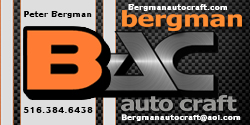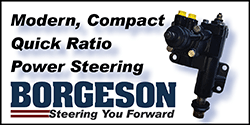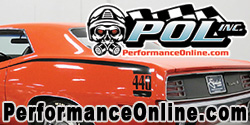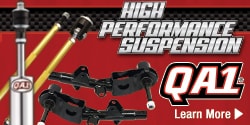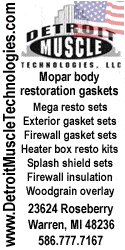I have a chance to pick up a rebuilt 318 boat engine for a really good price. The question is what if any differance is there between a boat engine and a car engine and will I be able to use this engine in my car?
318 boat motor question
- Thread starter 38 Dodge
- Start date
-
Make sure it don't run backwards, some boat engines (if not all) run opposite direction.
I learned this by pulling a starter off a boat engine (SBC).
I learned this by pulling a starter off a boat engine (SBC).
jimjimjimmy
lobsterman
every chrysler marine engine that i have seen runs in reverse rotation but i have seen a few homemade marine conversions that run common rotation .but for 2 engines and to have counter rotation chrysler would need engines running both ways unless they done it with the gear box .just make sure to see what way it turns before you buy it.
TrailBeast
AKA Mopars4us on Youtube
I just had a FLOOD of thoughts of what reverse rotation would do in a car.
Nothing
Converter and trans both would run backwards so there would be no fluid pressure.
But even if it WAS possible for it to work you would have 3 gears in reverse and one really low gear forward.
Nothing
Converter and trans both would run backwards so there would be no fluid pressure.
But even if it WAS possible for it to work you would have 3 gears in reverse and one really low gear forward.
67Dart273
Well-Known Member
A Mopar reverse rotation smallblock should be easy to spot. So far as I've been able to find out, they all use a big adapter which is under the distributor. This is evidently connected with the reversed thrust load on the distributor drive gear:
http://www.marineengine.com/boat-fo...tor-Gear&highlight=chrysler,+reverse+rotation

If that is not present, the only way I know to check an engine for rotation would be to remove the valve covers, bring up no1 ready to fire (both no 1 valves closed) then rotate and watch the valve actuation by firing order.
http://www.marineengine.com/boat-fo...tor-Gear&highlight=chrysler,+reverse+rotation

If that is not present, the only way I know to check an engine for rotation would be to remove the valve covers, bring up no1 ready to fire (both no 1 valves closed) then rotate and watch the valve actuation by firing order.
Another way would be to put a car starter on it and see if air blows out the carb  , and sucking air in the exhaust
, and sucking air in the exhaust 
TrailBeast
AKA Mopars4us on Youtube
You'd think there would be something very strange about the timing marks and related positioning also.
jimjimjimmy
lobsterman
this is some very good info i always wondered why they used that adaptor but when you think about it this is the only way it will work.A Mopar reverse rotation smallblock should be easy to spot. So far as I've been able to find out, they all use a big adapter which is under the distributor. This is evidently connected with the reversed thrust load on the distributor drive gear:
http://www.marineengine.com/boat-fo...tor-Gear&highlight=chrysler,+reverse+rotation

If that is not present, the only way I know to check an engine for rotation would be to remove the valve covers, bring up no1 ready to fire (both no 1 valves closed) then rotate and watch the valve actuation by firing order.
jimjimjimmy
lobsterman
and another thought if the cam gear and the dist drive gear were cut the opposite way would this thrust need to be used ...but maybe im way off key here
67Dart273
Well-Known Member
Jimmy there seems to be some controversy. Many marine engines seem to use a chain drive just like standard engines, which of course means the cam is ground special.
I'm not a "boat guy" and have not figured out why some reverse engines end up in single engine boats. Maybe it's as simple as some manufacturer "overordered" on LH engines for twins, and got rid of 'em in single engine installations.
I don't know.....maybe there's some advantage for some uses, approaching a particular side of the dock with a current running? Don'..................kno................
I'm not a "boat guy" and have not figured out why some reverse engines end up in single engine boats. Maybe it's as simple as some manufacturer "overordered" on LH engines for twins, and got rid of 'em in single engine installations.
I don't know.....maybe there's some advantage for some uses, approaching a particular side of the dock with a current running? Don'..................kno................
TrailBeast
AKA Mopars4us on Youtube
That's a thought.
It would have to be a reversed tooth angle gear on the cam and the distributor drive.
But I got the impression that the part on the distributor shown, reveresed the drive inside the distributor.
It would have to be a reversed tooth angle gear on the cam and the distributor drive.
But I got the impression that the part on the distributor shown, reveresed the drive inside the distributor.
and another thought if the cam gear and the dist drive gear were cut the opposite way would this thrust need to be used ...but maybe im way off key here
TrailBeast
AKA Mopars4us on Youtube
Usually only twin engine boats have one motor reversed to offset the torque of the other engine.
Can't see why a single engine boat would need it.
On single engine boats the drive unit has an adjustable deflector so that you can adjust the compensation for engine torque.
Can't see why a single engine boat would need it.
On single engine boats the drive unit has an adjustable deflector so that you can adjust the compensation for engine torque.
Jimmy there seems to be some controversy. Many marine engines seem to use a chain drive just like standard engines, which of course means the cam is ground special.
I'm not a "boat guy" and have not figured out why some reverse engines end up in single engine boats. Maybe it's as simple as some manufacturer "overordered" on LH engines for twins, and got rid of 'em in single engine installations.
I don't know.....maybe there's some advantage for some uses, approaching a particular side of the dock with a current running? Don'..................kno................
jimjimjimmy
lobsterman
back in the 70s and 80s there were a few guys running chrysler marine engines in there inshore lobster fishing boats these boats are all single engine boats. and all the engines turned backwards. i find this very interesting.these engines were very reliable and done a lot of hard work.
TrailBeast
AKA Mopars4us on Youtube
Now think about this,,,,
If you changed the distributor and cam, then it would be a normal 318 right?
Well,,,except for the engine load being in a different place on the bearings.
If you changed the distributor and cam, then it would be a normal 318 right?
Well,,,except for the engine load being in a different place on the bearings.
jimjimjimmy
lobsterman
i think thats all that would be needed to change it to normal rotationNow think about this,,,,
If you changed the distributor and cam, then it would be a normal 318 right?
Well,,,except for the engine load being in a different place on the bearings.
Oklacarcollecto
Life is an experiment
Seems like waggin has been there and done it so maybe he will chime in.
From another thread.
http://www.forabodiesonly.com/mopar/showthread.php?t=72789&highlight=340+marine
From another thread.
I have a marine 340 in my duster,runs like a scalded dawg!!!!WooF!!It's a 73 but had the steel crank in it and the intake was like a passenger car,not at an angle but I have two intakes for 318 marine that are at an angle and 1 273 marine intake that is not at an angle
http://www.forabodiesonly.com/mopar/showthread.php?t=72789&highlight=340+marine
TrailBeast
AKA Mopars4us on Youtube
I thought about Waggin too.
He might actually have a use for a reverse rotation motor.
He might actually have a use for a reverse rotation motor.
Seems like waggin has been there and done it so maybe he will chime in.
From another thread.
http://www.forabodiesonly.com/mopar/showthread.php?t=72789&highlight=340+marine
67Dart273
Well-Known Member
Now think about this,,,,
If you changed the distributor and cam, then it would be a normal 318 right?
Well,,,except for the engine load being in a different place on the bearings.
The knurling on the crank for the rear seal goes the wrong direction, pumps out "out" instead of in.
So far as reverse engines in single installations, it DOES happen. As I said, don't know why. May be because the manufacturer ordered too many twins, might be some other reason?
jimjimjimmy
lobsterman
thats right i forgot about the crank knurl .The knurling on the crank for the rear seal goes the wrong direction, pumps out "out" instead of in.
So far as reverse engines in single installations, it DOES happen. As I said, don't know why. May be because the manufacturer ordered too many twins, might be some other reason?
Inertia
Well-Known Member
Cams are different, water pump impellers can be different, starter and drive are diff,, alternator is standard and charges either way.,same timing mark, just extended to other side of "0"..
The rear seal surface is polished to reduce "knurl"
Found out about the impeller because cheap SOB before me put on a standard auto pump, ($30).. Everytime I ran the starboard engine past about 2400 rpm.. it would overheat,, changed heat-exchangers, and everything from one side to other... still overheated... Pulled fresh water pump and marine pump had staight impeller,, reverse engine had angled impeller for regular rotation.. put in $130 pump.. same housing and everything, with a staight impeller... all was good... sheesh
Just through observation, I think the direction of rotation is to offset the weight of where helm, and pilot are, as well as the direction the boat will pull to in reverse.. (it won't go straight back).. in smaller craft anyway..
The rear seal surface is polished to reduce "knurl"
Found out about the impeller because cheap SOB before me put on a standard auto pump, ($30).. Everytime I ran the starboard engine past about 2400 rpm.. it would overheat,, changed heat-exchangers, and everything from one side to other... still overheated... Pulled fresh water pump and marine pump had staight impeller,, reverse engine had angled impeller for regular rotation.. put in $130 pump.. same housing and everything, with a staight impeller... all was good... sheesh
Just through observation, I think the direction of rotation is to offset the weight of where helm, and pilot are, as well as the direction the boat will pull to in reverse.. (it won't go straight back).. in smaller craft anyway..
-



